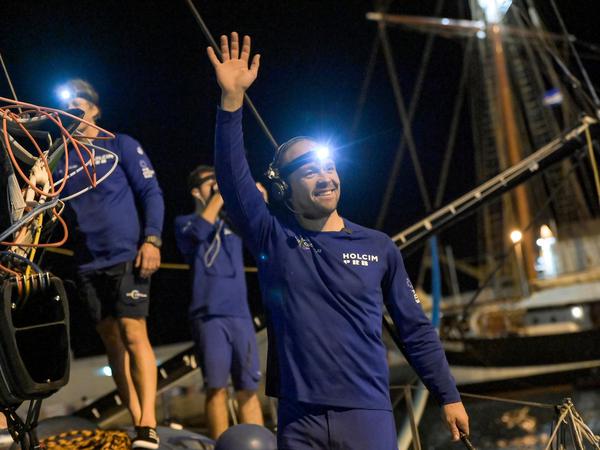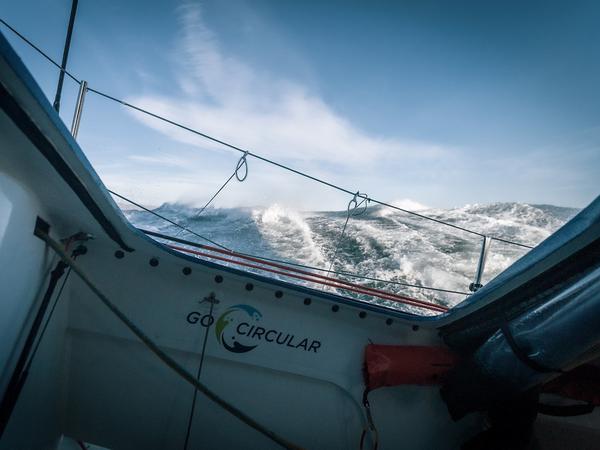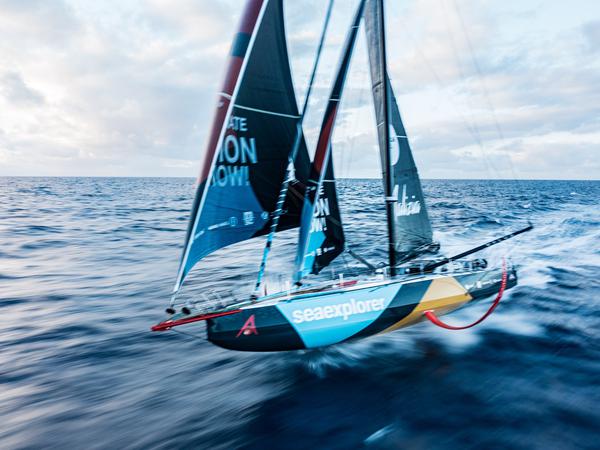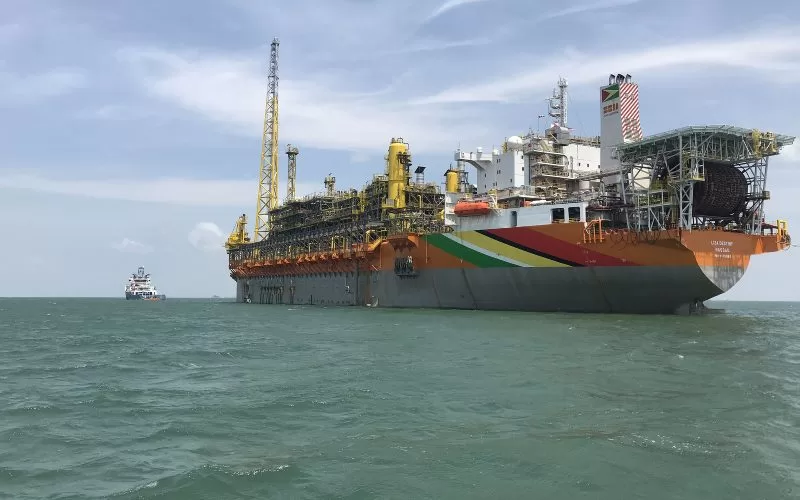Kevin Escoffier made things perfect early on Saturday morning: He crossed the finish line of the first stage of the Ocean Race in Mindelo on Cape Verde with his four-man “Holcim PRB” crew. No one had reached her before him. Three hours later, Charlie Enright’s “11th Hour” arrived, followed in third place by “Malizia” skipper Boris Herrmann. The leading trio had recently settled the 1,900-mile stretch in that order, with the pursuers having few opportunities to overtake Escoffier. The conditions in this trade wind sector of the Atlantic were too constant for that.
Paul Meilhat’s “Biotherm”, which had fallen behind quickly after a furious start, and the “Guyot” team around Benjamin Dutreux with Berliners Robert Stanjek and Philip Kasüske on board followed at a considerable distance. They were more than 300 miles behind the stage winner when they crossed the finish line, which is about a day.
This means that the slower Imoca yachts, despite their foils, even have to admit defeat to the best VO65 yachts. Of these, the Polish “Windwhisper” team was the first to cross the finish line on Saturday. It had sailed out a lead of 50 miles over the Dutch pursuers from “Team Jajo”. The Portuguese team from the Mirpuri Foundation arrived in Cape Verde as third.

Although the short leg of 1900 miles represents only about a twentieth of the total distance around the world, it gives an indication of the competitive strength of the individual Imoca crews.
So the preliminary decision among the five teams was made early. After “Biotherm” had taken the lead in the high-speed field with a furious start in perfect downwind conditions, the ranking on the south-eastern corner of Spain was rearranged. The Imocas got stuck in a high-pressure bridge. In this lull, “11th Hour” and “Holcim-PRB” made their way south, while “Malizia” and “Biotherm” tried their luck in the west. The south course paid off in this gamble that is heavily dependent on local effects. The losers soon fell ten miles behind.

That doesn’t seem like much, but the main thing on the following day was to make it to the Strait of Gibraltar unscathed. Hurricane force winds from the west swept over the participants. It was the first material test in this not exactly poor marathon. Herrmann reported afterwards that they could hardly communicate on board the “Malizia” in the first three days, the noise of the boat was so loud, the hull of which crashed incessantly into the oncoming waves. There was little room for tactical overtaking options.
The motto was to weather the worst and just don’t cause any damage. But problems were not long in coming. On board the “Guyot” they discovered a tear in the mainsail, which to mend meant reducing speed in the turbulent sea. The same fate befell “11th Hour”.
If, in the 50 years that the Ocean Race has existed, there has been a change in format, as was the case recently with the introduction of the Imoca class, pure sailing was initially not so important and was overshadowed by technical problems. The racers, whether W60, VO70 or VO65, had more to do with floating workshops than with racing yachts. The Imoca type may be well tried, if not under team race conditions, which demand more from the material than solo sailors or two-person crews. However, serious damage would inevitably put a team out of contention – given the tight schedule.

Herrmann had predicted before the stage who would be the first to reach the steady trade winds on the Atlantic would be in front and uncatchable. And so it happened. The small margin of sight quickly turned into 50 miles and more as the two leaders cruised out to the Atlantic and found more comfortable conditions there.
The route through the Canary archipelago opened up tactical options for the pursuers, but they hardly paid off. Nevertheless, the sailing behavior of the “Malizia-Seaexplorer” should have encouraged her German skipper. Although the idiosyncratic construction looks much heavier than the competition, it proved surprisingly quick and stable towards the end of the stage. She logged the highest average speed, and drone footage from onboard reporter Antoine Auriol provides a studio of her sleek handling, with the ample bow almost never diving in the water and hardly ever applying braking – unlike the narrower cuts of the competition. The new foils of the “Malizia” serve their purpose.

The boat is getting a “soul”, Herrmann once said happily in a video sent from on board. It’s like a new restaurant where the food is good right from the start, but you only feel comfortable in the restaurant when it starts to come alive. He and his mates Will Harris, Rosalin Kuiper and Nicolas Lunven have evidently settled into the boat.
The race resumes on January 25th. Leg 2 is to Cape Town, South Africa, where the Imocas are expected to arrive three weeks later.
To home page

